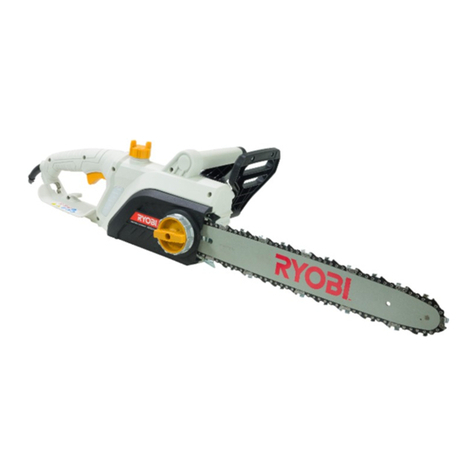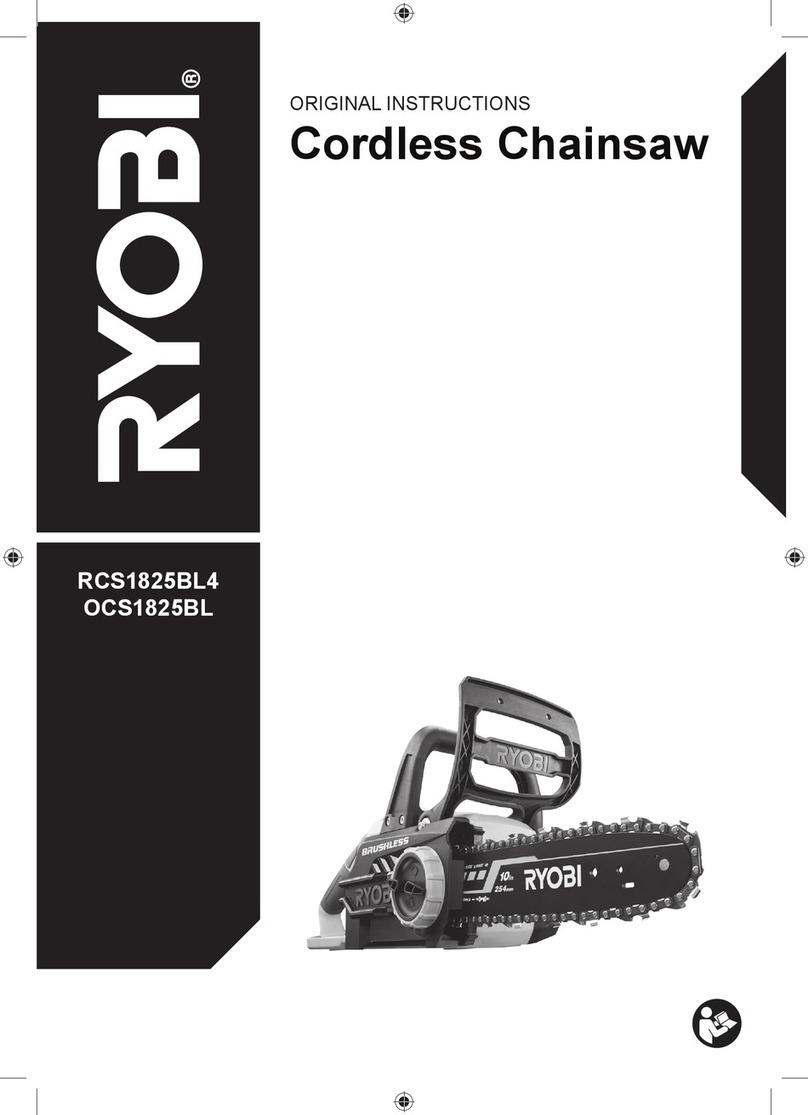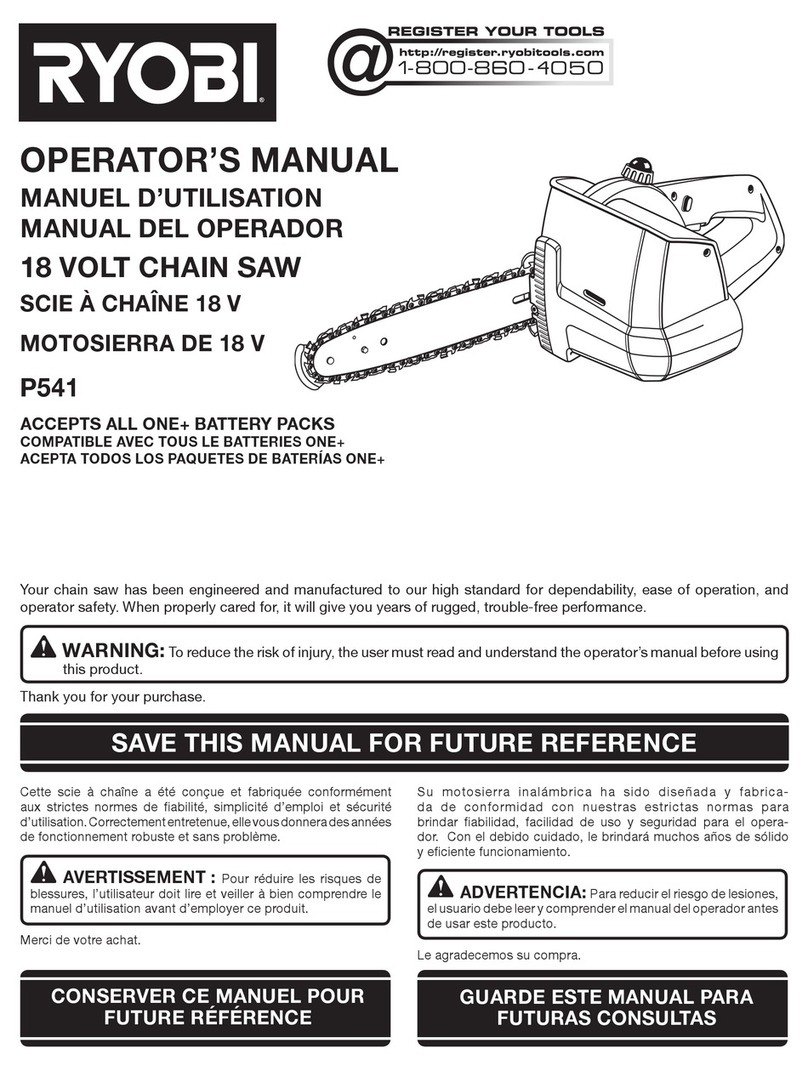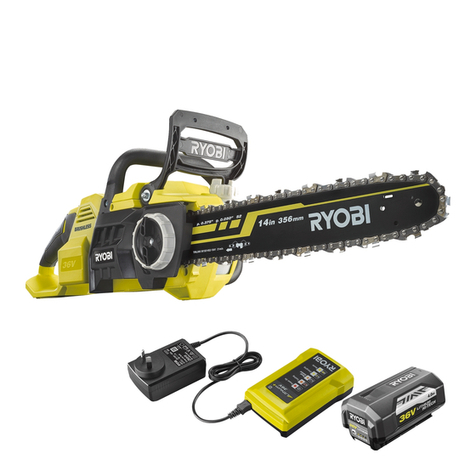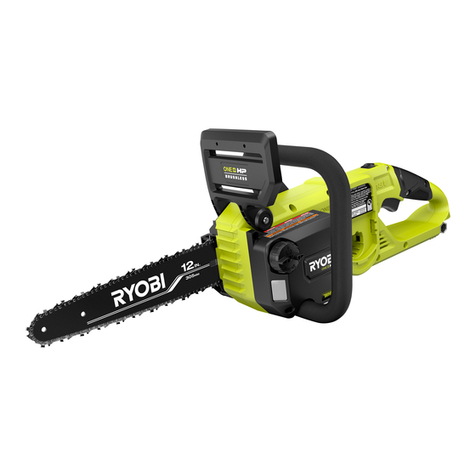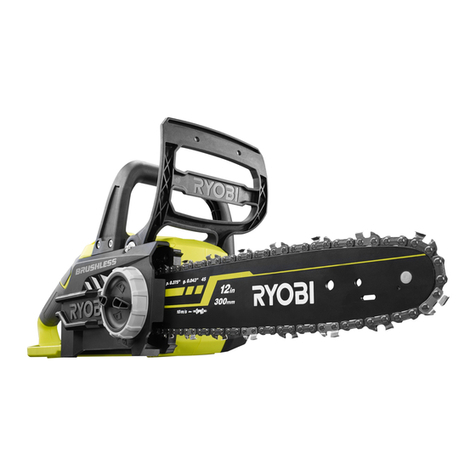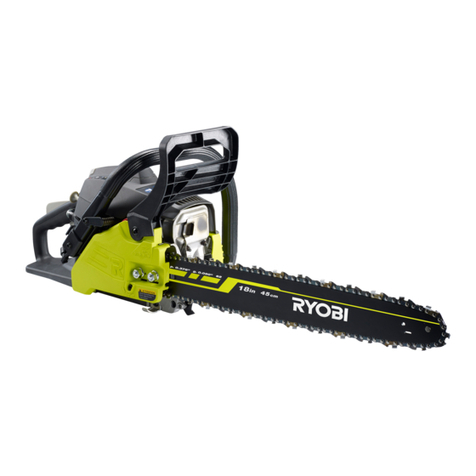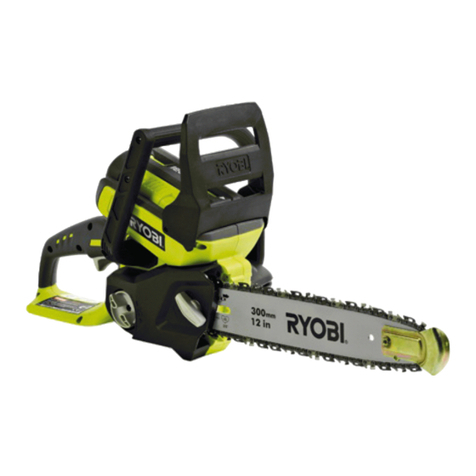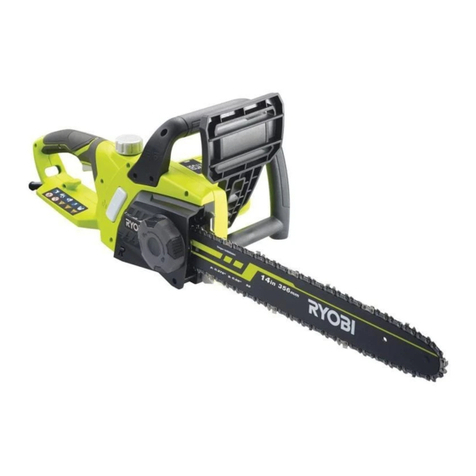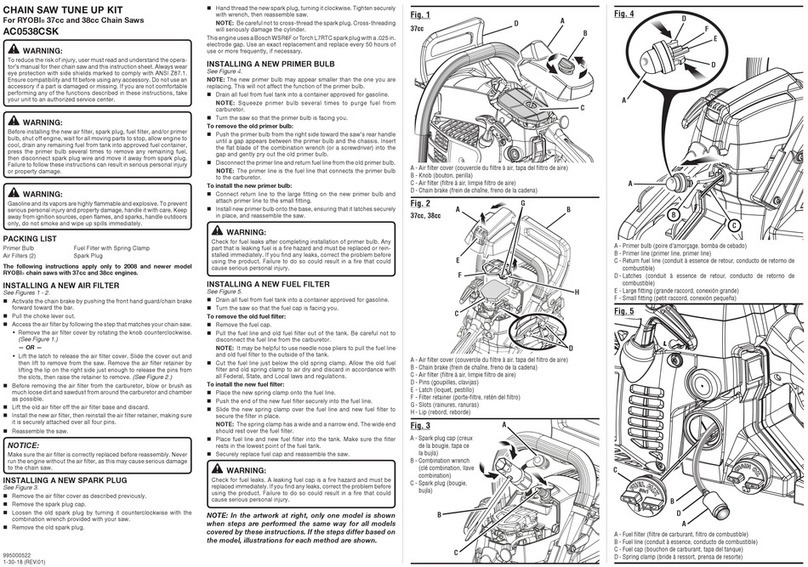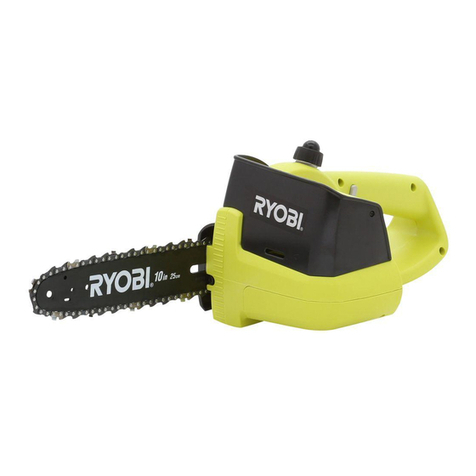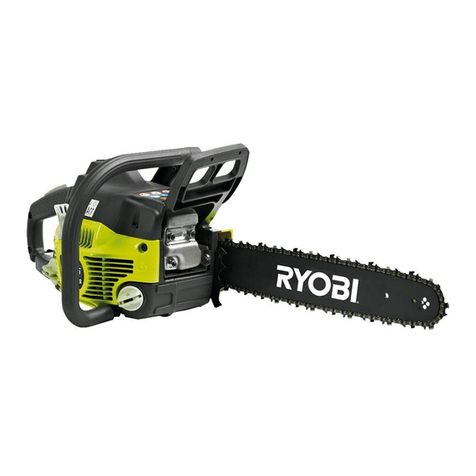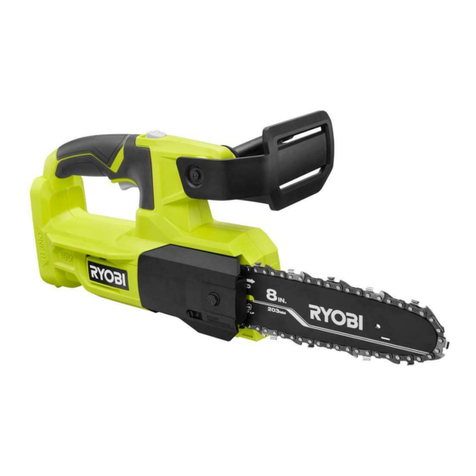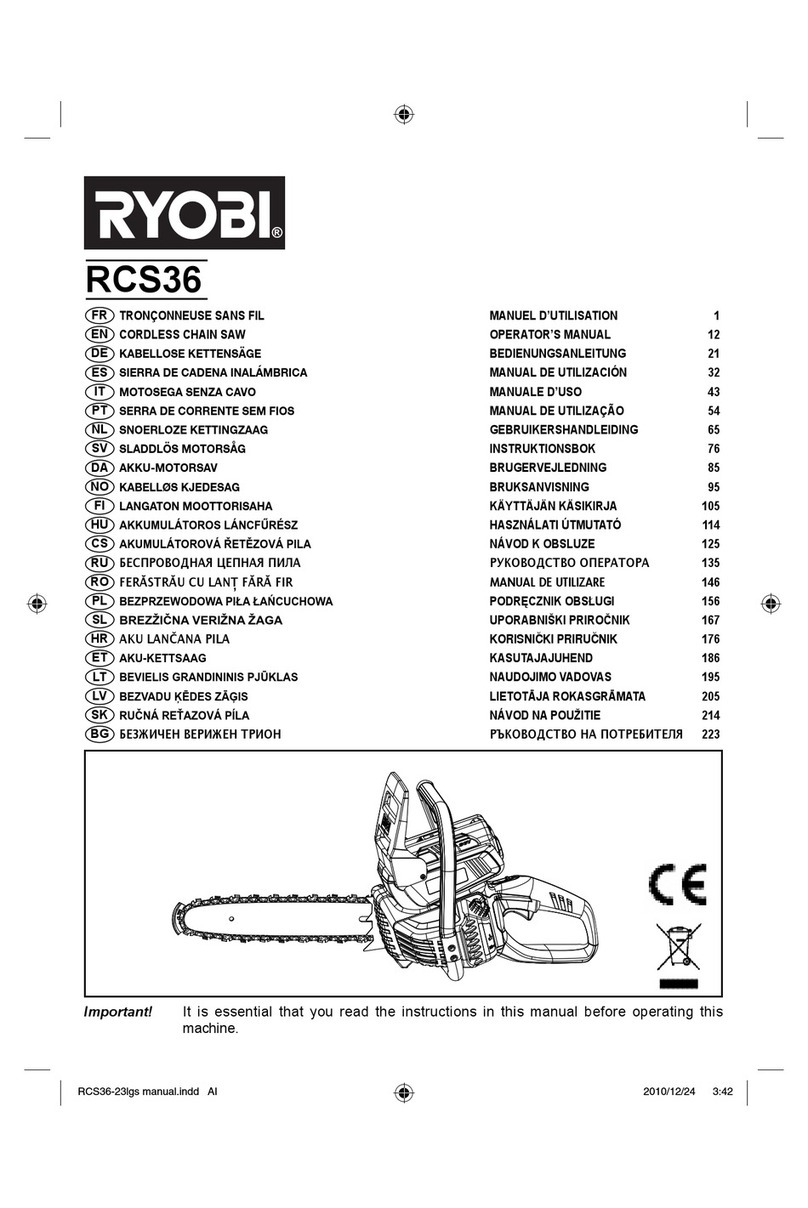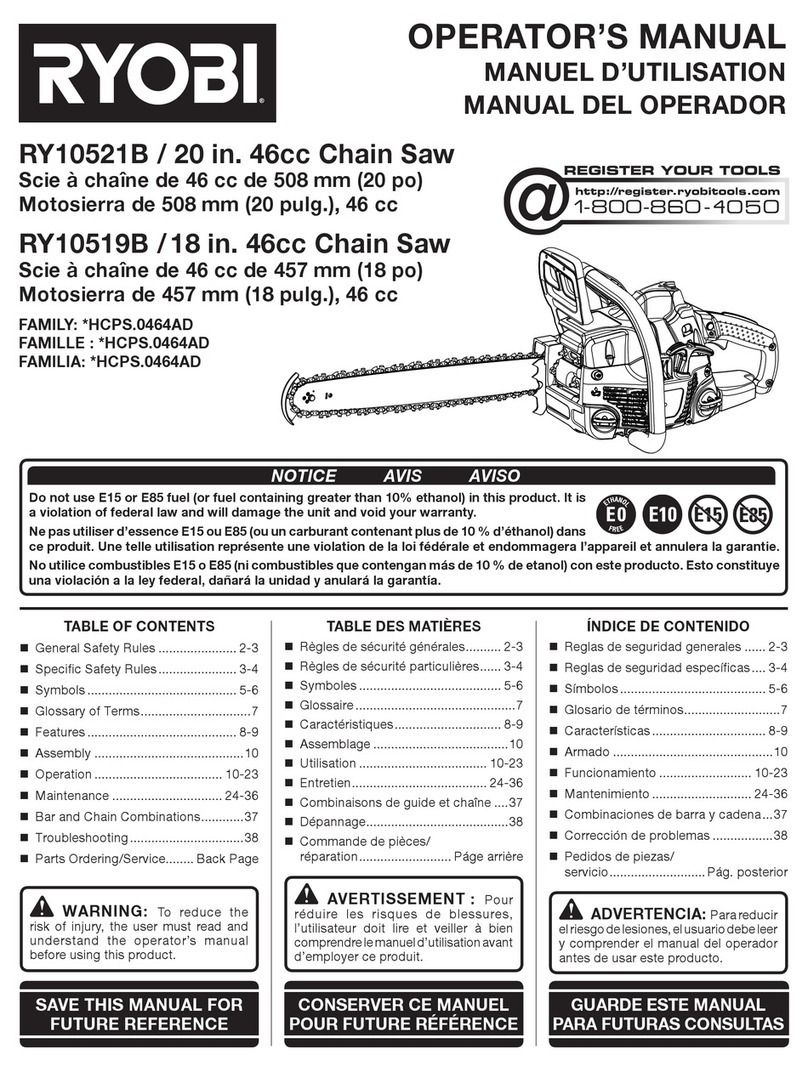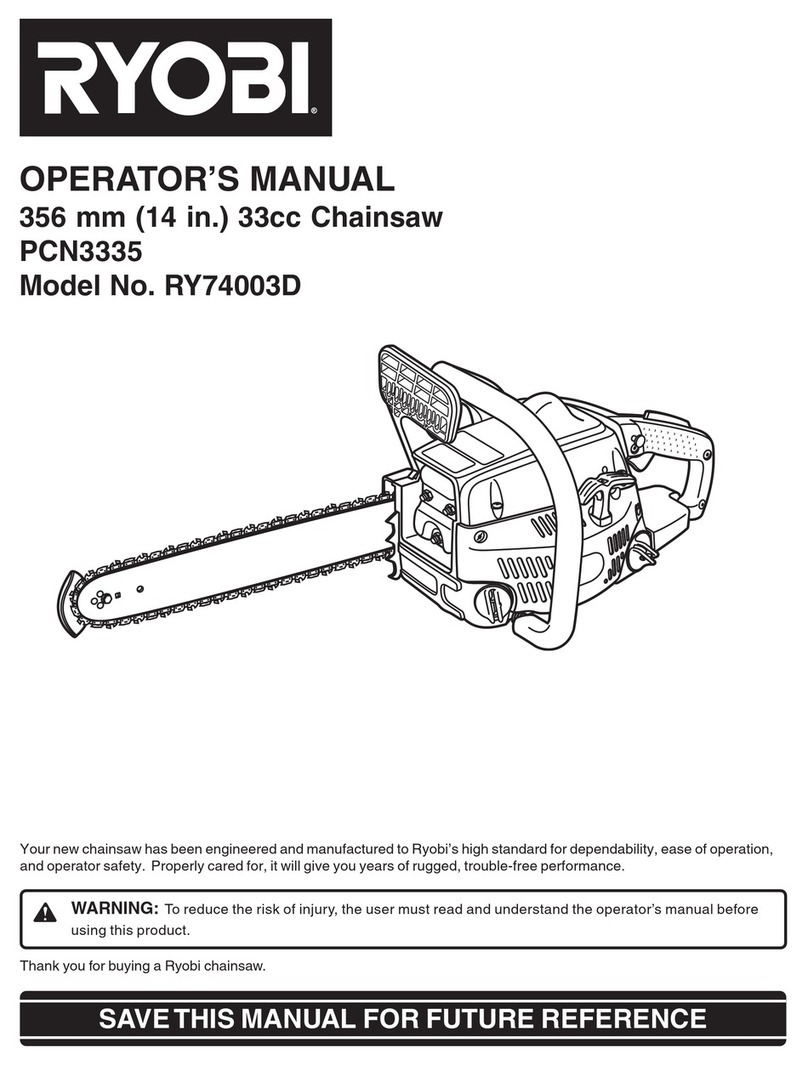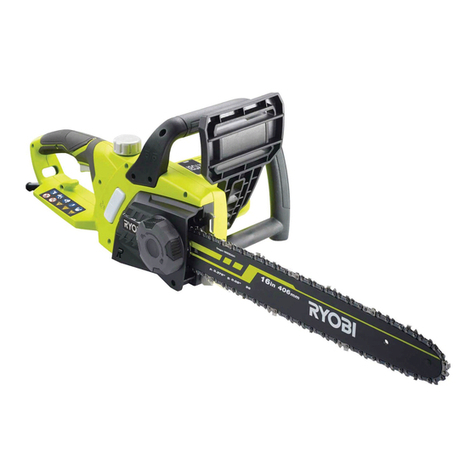
3
GENERAL SAFETY RULES
READ ALL INSTRUCTIONS
BASIC SAFETY PRECAUTIONS
Do not operate a chain saw with one hand! Use
armgripwiththumbsandngersencirclingthe
chain saw handles. Serious injury to the operator,
helpers, bystanders, or any combination of these
persons may result from one-handed operation.
A chain saw is intended for two-handed use.
Always be aware of what you are doing when
using the chain saw. Use common sense. Do
not operate the chain saw when you are tired,
ill,orundertheinuenceofalcohol,drugs,or
medication.
Stay alert and pay attention to what you are
doing. Use common sense when using this unit.
Keep all parts of your body away from the saw
chain when the unit is running.
Always carry the chain saw by the front handle
with the unit stopped and the guide bar and saw
chain positioned to the rear. When transporting
your chain saw, use the appropriate guide bar
cover.
Never let anyone use your chain saw who has
not received adequate instructions in its proper
use. This applies to rentals as well as privately
owned saws.
Before you start the unit, make sure the saw
chain is not contacting any object.
Stop the chain saw before setting it down. Do
not leave the unit running unattended.
To avoid accidental starting, never carry the unit
withyourngerontheswitchtrigger.
Maintain the unit with care. Keep the cutting
edge sharp and clean for best performance and
to reduce the risk of injury. Follow instructions
for lubricating and changing accessories. Inspect
the battery charger cord periodically, and if
damaged, have it replaced or repaired by an
authorized service dealer.
WARNING:
Do not attempt to operate this unit until you have
read thoroughly and understand completely all
instructions, safety information, etc contained
in this manual. Failure to comply can result
in accidents involving re, electric shock, or
serious personal injury.
Keep handles dry, clean, and free of oil and
grease.
Do not operate a chain saw that is damaged,
improperly adjusted, or not completely and
securely assembled. Chain should stop turning
when the switch trigger is released. If the chain
turns after the switch trigger has been released,
have the unit serviced by your nearest Ryobi
service dealer.
Check for damaged parts. Any part or guard
that has been damaged should be carefully
checked to determine that it will operate properly
and perform its intended function. Check for
alignment of moving parts, binding of moving
parts, breakage of parts, mounting, and any
other conditions that may affect its operation. A
guard or other part that is damaged should be
properly repaired or replaced by an authorized
service dealer unless otherwise indicated
elsewhere in this manual.
All chain saw service, other than the items listed
in the operation and maintenance sections,
should be performed by your nearest Ryobi
service dealer.
Do not use in the rain, snow or wet conditions.
Always maintain a proper stance. Do not
overreach.
Do not adapt your chain saw or use it to power
any attachments or devices not listed for the saw.
Do not cut vines and/or small underbrush.
SAFETY APPAREL
Wearsnugttingclothing.Alwayswearheavy,
long pants, long sleeves, overalls, jeans or
chaps made of cut resistant material or ones
that contain cut resistant inserts. Wear non-slip
safety footwear. Wear non-slip heavy duty gloves
to improve your grip and to protect your hands.
Do not wear loose tting jewelry, short pants,
sandals,orgobarefoot.Donotwearloosetting
clothing, which could be drawn into the motor or
catch the chain or underbrush. Secure hair so it
is above shoulder level.
Wear eye protection which is marked to comply
with standards as well as hearing and head
protection when operating this equipment.
